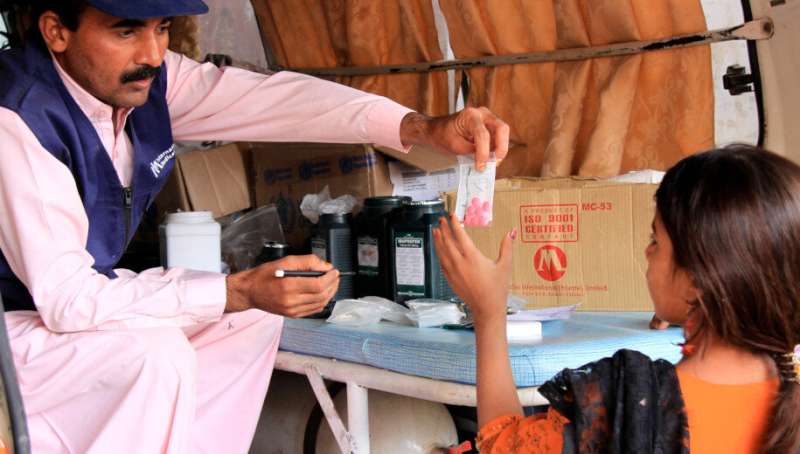
Only about six percent of research and development (R&D) projects from 20 leading global pharmaceutical companies target children, despite major gaps in the pediatric medicines pipeline, a report shows.
Many new treatments are under development which could “dramatically improve” the health of children in low- and middle-income countries (LMICs), says the Netherlands-based Access to Medicine Foundation, which produced the report. However, many projects lack access plans to ensure the drugs reach those who need them.
The analysis released last week (25 March) is based on the 2021 Access to Medicine Index, an independent ranking of the world’s leading pharmaceutical companies on their actions to improve access to medicine worldwide, published in January.
“We need to get targeted focus and action from companies and the global health community about the challenges in pediatric markets, which are often not prioritized and result in millions of preventable deaths,” said Claudia Martinez, research program manager for the Access to Medicine Index.
Over five million deaths occur each year among children under five from preventable and treatable disease, according to UNICEF, with the majority in LMICs.
The report, which analyzed data from 20 pharmaceutical companies, says only 69 of a total 1,073 R&D projects, about six percent, target children under 12-years old.
While 18 of the companies have projects aimed at children, most are focused on just three diseases: lower respiratory infections, cancer and HIV/AIDS. The pipeline for diseases such as sickle cell disease, epilepsy and diarrhoeal disease that disproportionately affect children in LMICs s are completely empty.
Citing challenges to the pediatric pipeline including clinical trial enrolment, regulatory requirements and tough market economics that limit treatment availability, the report gives five examples of “game-changing” treatments as examples of good practice.
These are treatments currently in late-stage development that have significant potential for LMICs including a nasal powder for severe hypoglycaemia from Eli Lilly, a dispersible tablet form of dolutegravir, a medicine from GSK for treating HIV, and praziquantel, a taste-masked dispersible tablet from Merck and Astrellas for treating pediatric schistosomiasis, or bilharzia, a water-borne parasitic disease predominantly found in Africa.
“Development and investment really aren’t enough. If you don’t think about access planning and how to ensure people will access them then it’s a job half done,” she said.
Defined as concrete, targeted plans that ensure new products are accessible and affordable in all the markets where they’re needed, access plans were found with 31 of the 69 pediatric projects. Only three of the five “game-changing” treatments had such plans.
For Manuel Martin, access policy advisor for the Doctors Without Borders (MSF) Access Campaign, it is not as simple as whether a company has access plans in place.
“The details of the access plans are what matters and following up on their progress,” he said. “Companies may be measuring themselves against each other based on the report, but this may not be the gold standard we want.”
Martin believes that access to pediatric medicines is a widespread and systemic problem that goes beyond corporate practices. “This highlights to world leaders, governments and policymakers that more needs to be done, and that’s something the Access to Medicine Foundation recognizes,” he said.
The analysis calls for pharmaceutical companies, product development partners, governments and the global health community to work together to drive market incentives, integrate access planning and leverage government and donor funding.
Source: Read Full Article